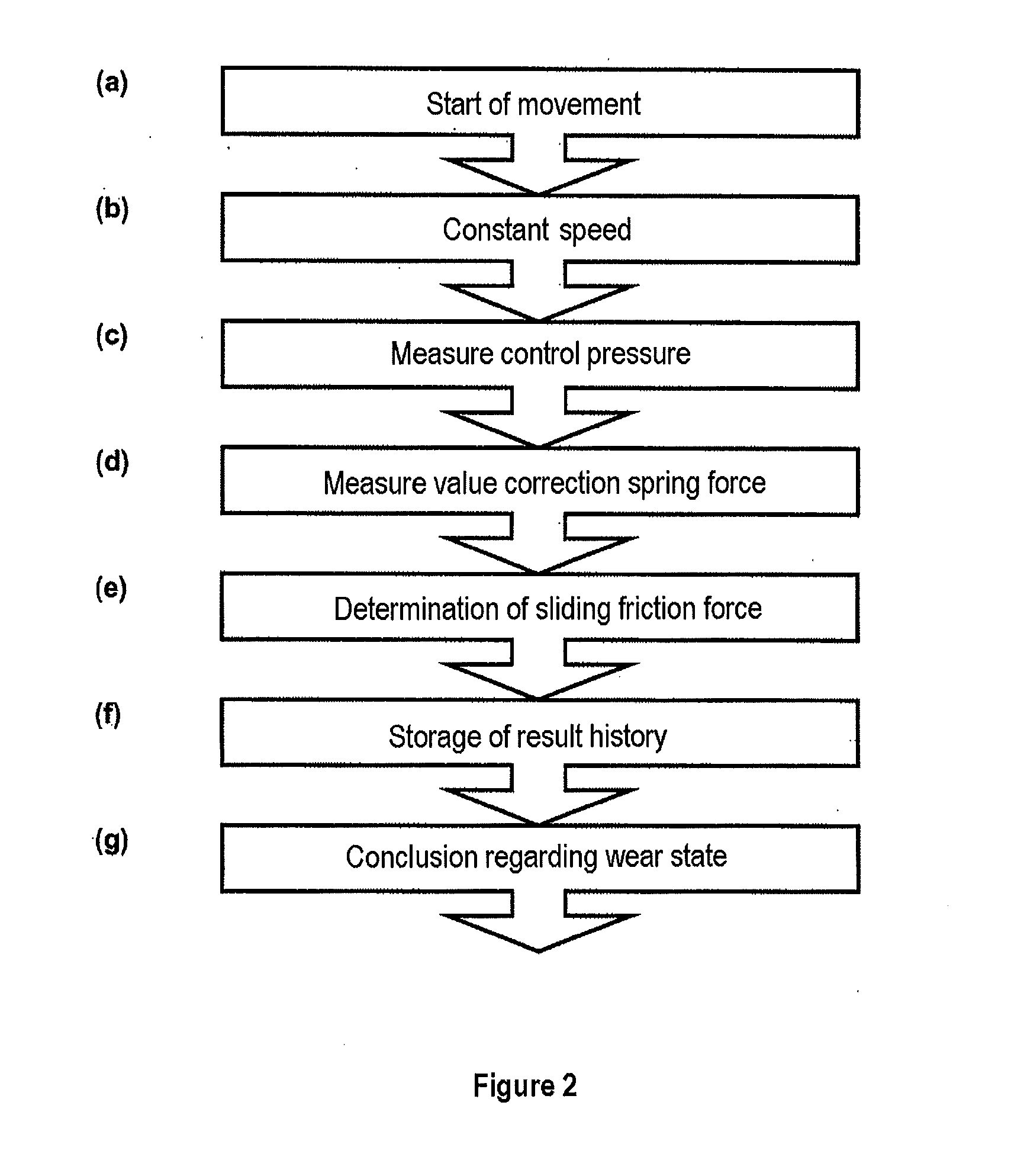Method for determining the path and pressure wear condition of a valve mechanism and valve arrangement using such a valve
a technology of path and pressure wear condition, which is applied in the direction of program control, testing/monitoring control system, instruments, etc., can solve the problems of total shutdown, adversely affecting an entire production installation or the like, and component dimensions can be quite small
- Summary
- Abstract
- Description
- Claims
- Application Information
AI Technical Summary
Benefits of technology
Problems solved by technology
Method used
Image
Examples
Embodiment Construction
[0019]Methods are disclosed for sensor operating-state determination of a valve mechanism based on evaluation of sliding friction that occurs, such that it is possible to draw a conclusion which is as precise as possible of the current sliding friction of the valve element by the inclusion of highly valid measured values.
[0020]The disclosure includes an exemplary method whereby a valve element is moved at a constant speed over at least a subarea of travel movement, the value of which speed can be measured via a position sensor system for signal processing. The currently applied control pressure can be measured at the same time (i.e., at approximately the same time within a specified tolerance such as within approximately 0.1 sec. or lesser, or greater) for signal processing via a pressure sensor system. The current sliding friction of the valve element can be determined as a measure of the wear state from both measured values, by means of an electronic evaluation unit, from a propor...
PUM
 Login to View More
Login to View More Abstract
Description
Claims
Application Information
 Login to View More
Login to View More - R&D
- Intellectual Property
- Life Sciences
- Materials
- Tech Scout
- Unparalleled Data Quality
- Higher Quality Content
- 60% Fewer Hallucinations
Browse by: Latest US Patents, China's latest patents, Technical Efficacy Thesaurus, Application Domain, Technology Topic, Popular Technical Reports.
© 2025 PatSnap. All rights reserved.Legal|Privacy policy|Modern Slavery Act Transparency Statement|Sitemap|About US| Contact US: help@patsnap.com



